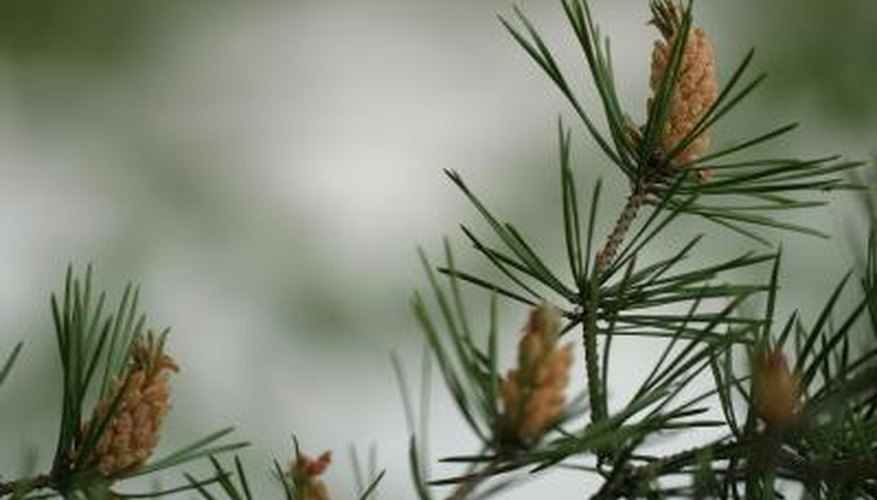Trees generally develop one of three root systems. Flat roots, which are common in sites with sandy, shallow soils, spread horizontally and stay near the surface. Heart roots extend both vertically and horizontally. Tap roots penetrate most deeply and grow in a roughly vertical form. Some coniferous trees, or trees that produce cones to hold their seeds, produce tap roots, especially when growing in deep soils.
Cypress
Cypress (Taxodium spp.) trees are deciduous conifers The pond cypress (T. ascends) has a taproot. This pyramidal, upright tree grows to 80 feet tall with a 20-foot spread. It has fine, grey-green needles that turn orange in fall and produces 2-inch-long cones. Pond cypress trees thrive in U.S. Department of Agriculture plant hardiness zones 6 to 9 and thrive in full sun and a range of soils. Bald cypress trees (T. distichum) also have long taproots. Hardy in zones 4 to 9, these 100-foot-tall trees have a 30-foot spread and produce 1- to 2-inch cones. They grow best in full sun and thrive in a range of soils, from wet to dry.
- trees are deciduous conifers The pond cypress (T. ascends) has a taproot.
- Hardy in zones 4 to 9, these 100-foot-tall trees have a 30-foot spread and produce 1- to 2-inch cones.
Pines
Several pine (Pinus spp.) trees develop taproots under certain growing conditions. The longleaf pine (P. palustris) grows to 100 feet tall with a 12-foot-long taproot. This tree lives for up to 300 years and has dark-green, 8- to 18-inch-long needles. It produces long, grey-brown cones. Longleaf pines are hardy in zones 7B to 9 and prefer full sun and a range of soils. The Ponderosa pine's (P. ponderosa) taproot grows from 3 to 6 feet long. This conifer grows to 100 feet tall with a 30-foot spread and produces red-brown, 3- to 6-inch cones. It requires full sun and prefers moist, well-drained soil. Ponderosa pines are hardy in zones 3 to 7. Other pines with taproots include the Himalayan (P. wallichiana), lodgepole (P. contorta) and sugar (P. lambertiana).
- trees develop taproots under certain growing conditions.
- The longleaf pine (P. palustris) grows to 100 feet tall with a 12-foot-long taproot.
Firs
Some fir (Abies spp.) trees have taproots. The Pacific silver fir (A. amabilis) grows up to 200 feet tall and develops a taproot when planted in deep soils. This conifer lives up to 590 years, prefers moist soil and tolerates shade. It is hardy to zone 6 and dark-green, grooved foliage. The grand or giant fir (A. grandis) grows up to 250 feet tall and develops a tap root on deep soil. Grand firs tolerate shade and prefer deep, fertile soil. They are hardy to zone 6 and have bright green needles with two stripes on the bottom.
- The Pacific silver fir (A. amabilis) grows up to 200 feet tall and develops a taproot when planted in deep soils.
Other Conifers
Other coniferous trees with taproots include the Douglas-fir (Pseudotsuga menziesii), a fast-growing, sun-loving evergreen that can live up to 1,400 years. Douglas firs develop tap roots when planted in deep soil. They are hardy in zones 4 to 6 and grow up to 330 feet tall in their natural habitat.
- Other coniferous trees with taproots include the Douglas-fir (Pseudotsuga menziesii), a fast-growing, sun-loving evergreen that can live up to 1,400 years.
Giant sequoias (Sequoiadendron giganteum) form long taproots. They require full sun and prefer deep, well-drained, sandy to loamy soils. Giant sequoias are cold hardy to zone 6. They can grow up to 250 feet tall and live up to 3,000 years.
